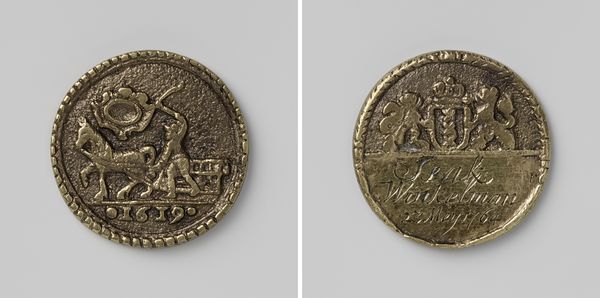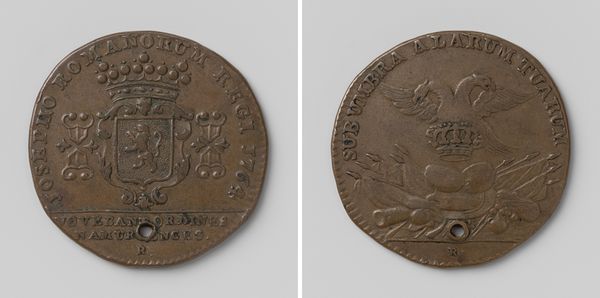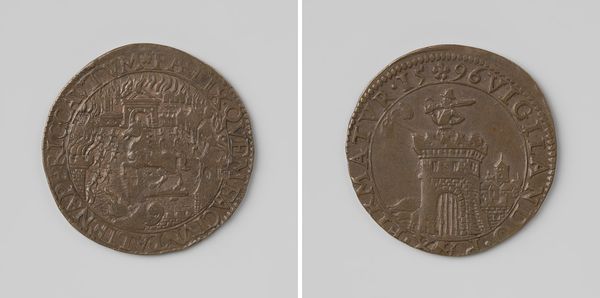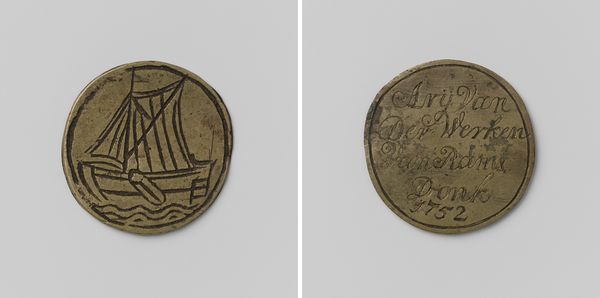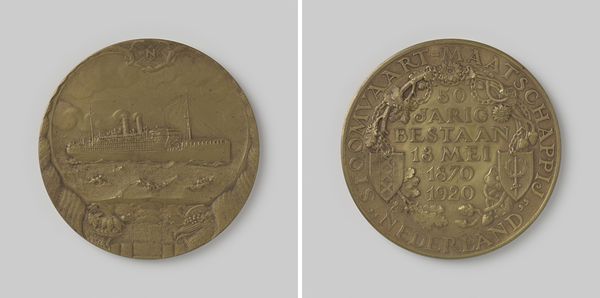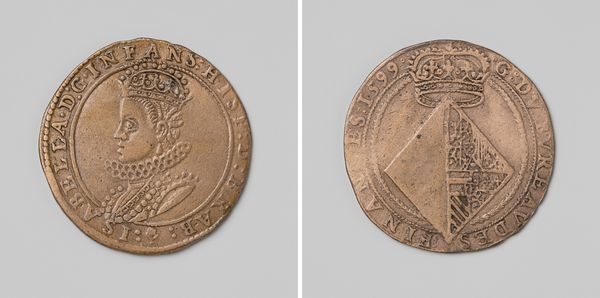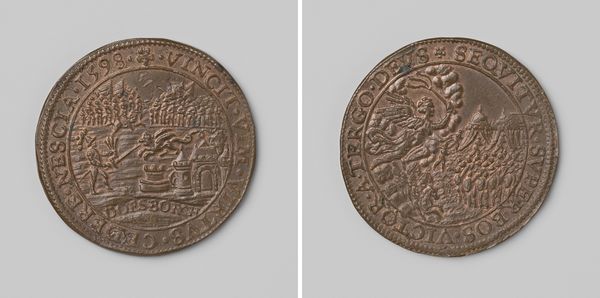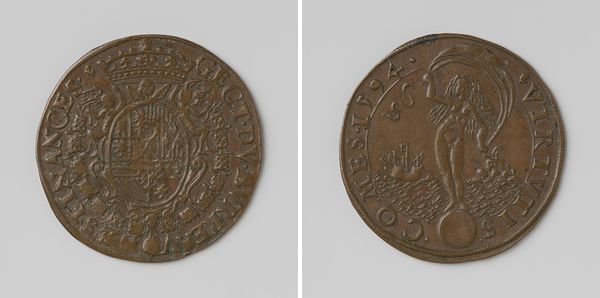
Roei-, steiger- en schuitenvoerdersgilde van Amsterdam, gildepenning van Verret de Boer, ligplaats Harlinger steiger 1648
0:00
0:00
carving, print, metal, relief, engraving
#
carving
#
dutch-golden-age
# print
#
metal
#
relief
#
engraving
Dimensions: diameter 3.5 cm, weight 10.75 gr
Copyright: Rijks Museum: Open Domain
Curator: So, we're looking at a rather curious object: a guild token from 1648, representing the Roei-, Steiger-, en Schuitenvoerdersgilde—the Amsterdam guild of rowers, dockworkers, and barge haulers. It was created by Verret de Boer and commemorates their mooring place at Harlinger steiger. It's a relief, a print, rendered on metal—perhaps silver. Editor: Immediately, the crude style of the engravings strikes me, endearingly amateurish, in a way! A perfect boat rendered with about seven lines and what looks like a dog… It’s weirdly charming! It almost looks like it could be on pirate booty, something I would have discovered buried in my yard. Curator: The imagery certainly speaks volumes. We have, on one side, the sailing vessel, naturally symbolizing their maritime occupation, and the date is engraved on either side of it within the border wreath. On the flip side, there is the figure of a working man surrounded by items representing daily life along with letters and glyphs which are a statement of the guild’s presence and activity in that place. All the symbols reflect cultural values that endure, work, perseverance and, prosperity. Editor: It is interesting how they immortalized everyday labor! To think that ordinary people had the need or perhaps desire, for representation on something approaching coinage, that could endure the elements is mind-blowing, you see how history itself is constructed around those memories. The imagery around the central figure on the coin is particularly revealing, I love those water jugs that surround the figure! It gives one a sense of hard physical labor rewarded with cold, nourishing, replenishment. Curator: These objects, while seemingly humble, provide such a tangible link to the past. The level of care indicates not a commercial goal but one related to pride, unity, and community, offering profound insights into the social fabric of 17th-century Amsterdam. Editor: I think this coin speaks volumes about how ordinary people made sense of the world, and how those people desired the exact same form of remembrance we do! After reflecting, the artist here truly encapsulated the common memory that the laborers possessed and turned it into iconography, a memento to themselves and now a view to the present.
Comments
No comments
Be the first to comment and join the conversation on the ultimate creative platform.

